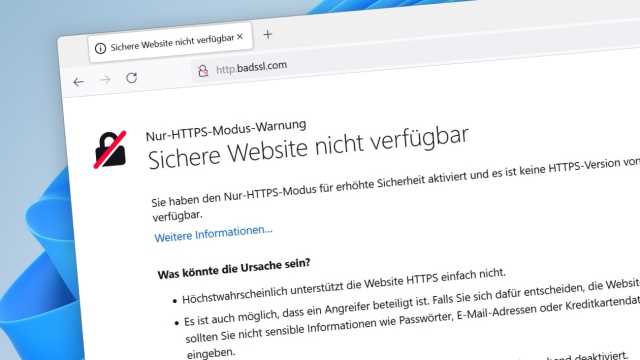Many users should be familiar with the HTTPS Everywhere browser extension. The idea behind it is simple: if websites offer their content via HTTP and encrypted via HTTPS, the extension guides you in the direction of HTTPS.
But last year, the makers announced that HTTPS Everywhere should no longer be maintained, after all, the big browsers come with similar functions.
In fact, Chrome and Firefox both offer an HTTPS mode, but unfortunately it is not turned on by default. Users must therefore become active themselves in order to benefit from surf protection.
Enable HTTPS mode in Firefox
Firefox goes even further than Chrome. You can also activate the HTTPS mode there in the settings. The right way is via “Privacy & Security”. Scroll all the way down, there you will find “HTTPS only mode”. You have the choice to turn on safe mode everywhere or just in private windows.
Firefox tries to redirect unencrypted connections to HTTPS. If that doesn’t work because only HTTP is available, you’ll see an error page. There is then the option to access the unencrypted version as an exception.
If there are problems with websites, you can define exceptions. To do this, click on the lock symbol in the URL line and set the HTTPS-only mode for this page to “Off”.
Only Firefox Klar for Android offers mobile HTTPS mode, but there it is switched on right from the start.
